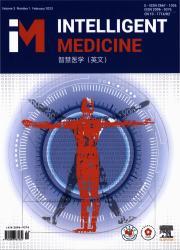Current trends and future orientation in diagnosing lung pathologies: A systematic survey
IF 6.9
Q1 COMPUTER SCIENCE, INTERDISCIPLINARY APPLICATIONS
引用次数: 0
Abstract
Lung diseases pose a significant threat to public health worldwide, resulting in a substantial number of fatalities. Diseases such as chronic obstructive pulmonary disease and lung cancer constitute two of the three deadliest diseases worldwide, contributing to over 3 million deaths annually. This study offered a comparative analysis of different diagnostic techniques used for lung pathologies from an engineering standpoint. The review concentrated on intelligent detection methods, including electronic nose, computer vision (CV), or image processing, and biosensors such as graphene-field effect transistor (FET). The E-nose-based detection technique uses electronic sensors to recognize volatile organic compounds (VOCs) in the exhaled breath. These VOCs can aid in the diagnosis of lung pathologies such as pneumonia. The CV processing method involves the application of advanced imaging techniques and machine learning algorithms to scrutinize and diagnose lung pathologies and ventilator-associated pneumonia (VAP). Lastly, biosensors employ the exceptional properties of these materials to identify specific biomarkers in biological samples. This information can be used to diagnose lung pathologies and VAP. This study examined the current state-of-the-art methods and offers a comprehensive analysis of their advantages and disadvantages from an engineering perspective. The study underscored the potential of these techniques to enhance the diagnosis of lung pathologies and VAP and presents the advances in the field of smart biomedical applications. Additionally, it emphasized the necessity for further research to optimize their performance and clinical usefulness.

肺病理诊断的当前趋势和未来方向:一个系统的调查
肺部疾病对全世界的公共卫生构成重大威胁,造成大量死亡。慢性阻塞性肺病和肺癌等疾病是全世界三种最致命疾病中的两种,每年造成300多万人死亡。本研究从工程学的角度比较分析了用于肺部病理的不同诊断技术。综述集中在智能检测方法,包括电子鼻,计算机视觉(CV),或图像处理,和生物传感器,如石墨烯场效应晶体管(FET)。这种基于电子鼻的检测技术利用电子传感器识别呼出气体中的挥发性有机化合物(VOCs)。这些挥发性有机化合物可以帮助诊断肺部疾病,如肺炎。CV处理方法涉及应用先进的成像技术和机器学习算法来仔细检查和诊断肺部病变和呼吸机相关性肺炎(VAP)。最后,生物传感器利用这些材料的特殊特性来识别生物样品中的特定生物标志物。该信息可用于诊断肺部病变和VAP。本研究考察了目前最先进的方法,并从工程角度全面分析了它们的优缺点。该研究强调了这些技术在增强肺部病变和VAP诊断方面的潜力,并介绍了智能生物医学应用领域的进展。此外,它强调了进一步研究的必要性,以优化其性能和临床应用。
本文章由计算机程序翻译,如有差异,请以英文原文为准。
求助全文
约1分钟内获得全文
求助全文
来源期刊

Intelligent medicine
Surgery, Radiology and Imaging, Artificial Intelligence, Biomedical Engineering
CiteScore
5.20
自引率
0.00%
发文量
19
 求助内容:
求助内容: 应助结果提醒方式:
应助结果提醒方式:


